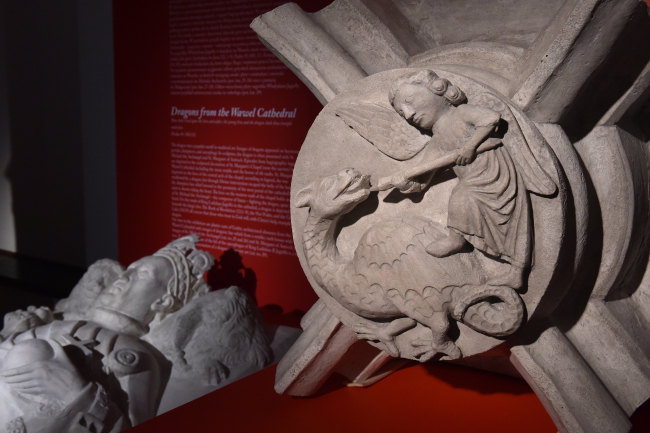Wawel Castle delves into dragon myth in new show
PR dla Zagranicy
Nick Hodge
12.08.2015 14:17
A new show exploring the dragon tale that has endured as Krakow's founding myth is being launched at Wawel Royal Castle, Poland's favourite tourist destination.
 A close encounter with the 'holophagus' at Wawel Royal Castle's exhibition, which runs until October 2015. Photo: PAP/Jacek Bednarczyk
A close encounter with the 'holophagus' at Wawel Royal Castle's exhibition, which runs until October 2015. Photo: PAP/Jacek Bednarczyk
'Two Faces of the Dragon' delves into both the symbolism of the mythical beast as well as archaeological research carried out in the 'Dragon's Den' at the foot of the castle and elsewhere.
“For hundreds of years, the story was passed down and retold, but substantial changes were not introduced until the second half of the last century, when talented writers transformed the frightful monster into a loveable, wise, and child-friendly fairytale character,” notes Jerzy Petrus, Deputy Director of Wawel Royal Castle, in a catalogue accompanying the show.
According to legend, a dragon, or 'holophagus', once terrorised the region ruled over by a certain Prince Krak.
It was eventually defeated, ushering in an era of harmony and prosperity and the foundation of the city.

Plaster cast of a vault boss from Wawel Cathedral. The sculptor depicted St Michael the Archangel fighting a dragon with a spear. Photo: PAP/Jacek Bednarczyk
Besides artists' depictions of the dragon, dozens of other artifacts have been assembled, placing the monster in its cultural context.
Likewise, successive waves of archaeological work are covered, taking in both the Dragon's Den and the Prince Krak Mound where, according to legend, the ruler was buried.
The Dragon's Den, an extensive cave below the castle, was opened to the public following World War I, chiming in with the regaining of Poland's sovereignty after over a hundred years of foreign rule.
'Two Faces of the Dragon' opens to the general public on Thursday 13 August. It was co-funded by EEA Grants and curated by art historian Agnieszka Janczyk and archaeologist Beata Kwiatkowska-Kopka. (nh)